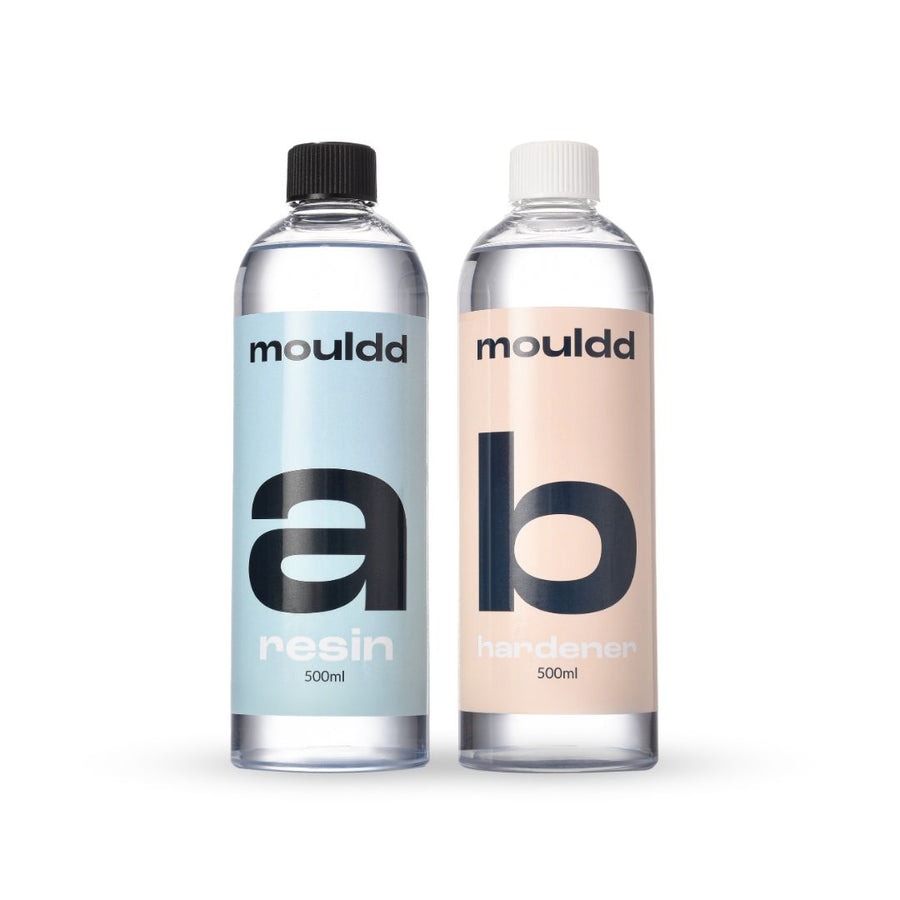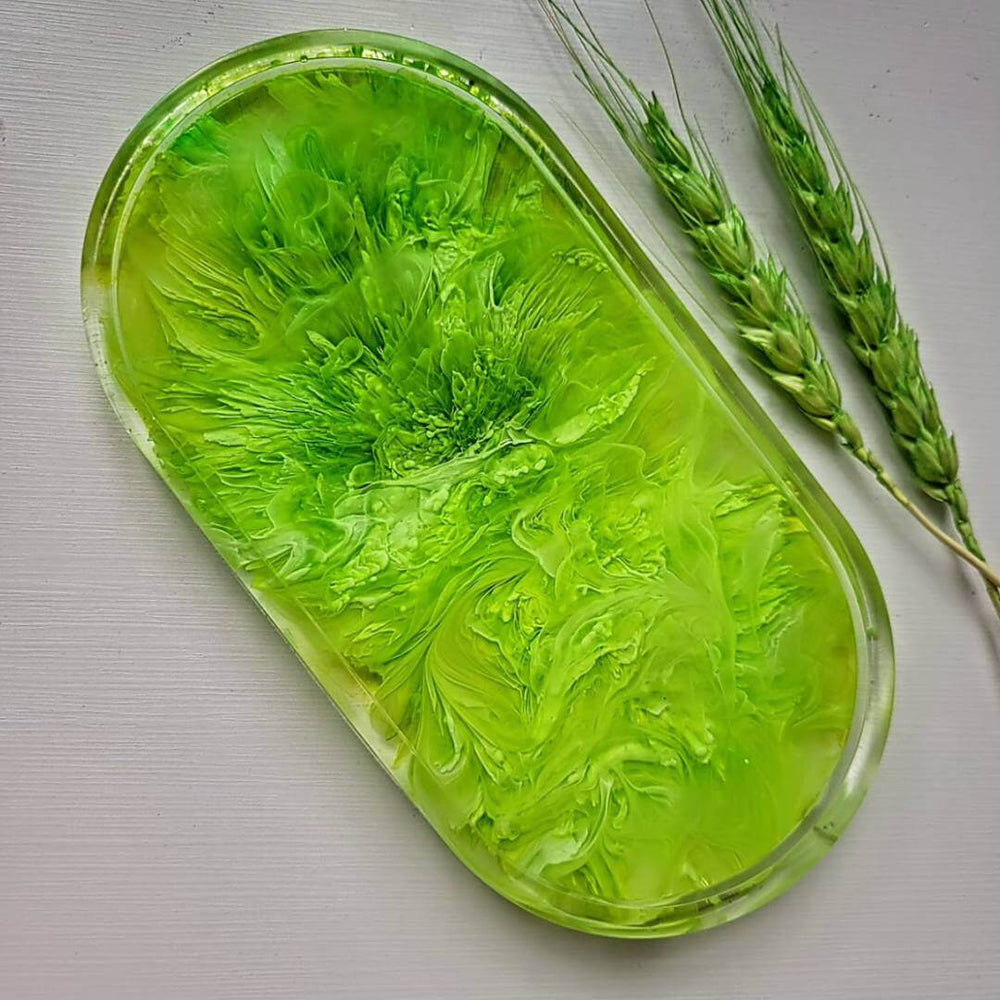How to work with cold resin
Working with mouldd resin during colder months can be a rewarding but more difficult experience than in the glorious summer! The drop in temperature can affect the resin's curing process, potentially leading to issues like incomplete curing, air bubbles, or uneven finishes. However, with the right techniques and precautions, you can still create stunning resin art even when it's chilly outside. In this blog, we’ve compiled some essential tips to ensure your resin art still comes out perfect!
1. Pre-warm Your Resin
One of the primary challenges when working with resin in colder weather is the increased thickness and viscosity of the liquid. The increased thickness causes difficulties mixing the resin/hardener and also more bubbles during the mixing process. If you try to mix cold resin and hardener it is more likely it will not combine properly, this means that it will then not cure properly and will be left either tacky to touch or bendy.
To combat this, pre-warm your resin before mixing. Place your resin into a jug/bowl of very hot water for roughly 10/15 minutes. To check it has warmed up enough simply tip the bottle up and down to check all the resin runs freely and easily. Check there are no thicker spots within.
Mouldd hardener tends to be less thick than our resin, but may also require being warmed up if your room temperature drops below 15°C. Be cautious not to overheat either, as this can cause premature curing or other problems. Another way to heat the resin is by placing it next to a radiator, this will also work but remember to rotate the bottle to evenly heat the resin.
2. Control Your Temperature, Humidity and Condensation Levels
Temperature fluctuations can impact your curing process and lead to surface issues, such as hazy finishes.
Maintaining an appropriate temperature in your workspace is crucial when working with resin in colder months. The ideal temperature for resin work typically ranges from 18-22°C. If your workspace is colder than this, use space heaters to warm up the area.
You should also aim for humidity levels of 50 to 60% for optimal curing.
3. Use a Heat Mat
Investing in a heat mat designed for resin work can be a game-changer during colder months. Place your resin project on the heat mat while it cures to provide consistent warmth from beneath. This helps maintain an optimal curing temperature and reduces the risk of issues caused by temperature fluctuations. Placing your art under a box to contain the heat from the mat will also provide a more steady cure and prevent any dust from settling on it.
4. Mix Thoroughly and Slowly
Proper mixing is essential for resin projects in any season, but it's especially crucial in cold weather. The thicker consistency of cold resin can make it challenging to mix evenly. Take your time, and mix slowly, scraping the sides ensuring not to miss any unmixed hardener and to avoid introducing air bubbles. Keep mixing until the cloudiness from the hardener has disappeared.
5. Plan more time
Working with resin during colder months may require a bit more patience. The curing process will be slowed due to the drop in temperature, so you may find mouldd epoxy resin which usually cures within 24 hours now requires an additional day. Mouldd resin takes 7 days to reach full heat and scratch resistance, again you may find this takes slightly longer. You will need to factor this into your projects to make sure you still get that perfect finish.
Working with resin in colder months is entirely feasible with the right techniques and precautions. By pre-warming your resin, controlling humidity and temperature, mixing thoroughly and slowly, and using a heat mat, you can create stunning resin art even in chilly british weather! Embrace the challenge and let your creativity shine through as you master the art of working with resin during the colder months. With patience and practice, you'll achieve beautiful results that will warm your heart even on the coldest of days.
Remember we are always happy to help at mouldd. If you have any more questions simply reach out to us via email at hello@mouldd.co.uk and the team will do everything we can to help!
1. Pre-warm Your Resin
One of the primary challenges when working with resin in colder weather is the increased thickness and viscosity of the liquid. The increased thickness causes difficulties mixing the resin/hardener and also more bubbles during the mixing process. If you try to mix cold resin and hardener it is more likely it will not combine properly, this means that it will then not cure properly and will be left either tacky to touch or bendy.
To combat this, pre-warm your resin before mixing. Place your resin into a jug/bowl of very hot water for roughly 10/15 minutes. To check it has warmed up enough simply tip the bottle up and down to check all the resin runs freely and easily. Check there are no thicker spots within.
Mouldd hardener tends to be less thick than our resin, but may also require being warmed up if your room temperature drops below 15°C. Be cautious not to overheat either, as this can cause premature curing or other problems. Another way to heat the resin is by placing it next to a radiator, this will also work but remember to rotate the bottle to evenly heat the resin.
2. Control Your Temperature, Humidity and Condensation Levels
Temperature fluctuations can impact your curing process and lead to surface issues, such as hazy finishes.
Maintaining an appropriate temperature in your workspace is crucial when working with resin in colder months. The ideal temperature for resin work typically ranges from 18-22°C. If your workspace is colder than this, use space heaters to warm up the area.
You should also aim for humidity levels of 50 to 60% for optimal curing.
3. Use a Heat Mat
Investing in a heat mat designed for resin work can be a game-changer during colder months. Place your resin project on the heat mat while it cures to provide consistent warmth from beneath. This helps maintain an optimal curing temperature and reduces the risk of issues caused by temperature fluctuations. Placing your art under a box to contain the heat from the mat will also provide a more steady cure and prevent any dust from settling on it.
4. Mix Thoroughly and Slowly
Proper mixing is essential for resin projects in any season, but it's especially crucial in cold weather. The thicker consistency of cold resin can make it challenging to mix evenly. Take your time, and mix slowly, scraping the sides ensuring not to miss any unmixed hardener and to avoid introducing air bubbles. Keep mixing until the cloudiness from the hardener has disappeared.
5. Plan more time
Working with resin during colder months may require a bit more patience. The curing process will be slowed due to the drop in temperature, so you may find mouldd epoxy resin which usually cures within 24 hours now requires an additional day. Mouldd resin takes 7 days to reach full heat and scratch resistance, again you may find this takes slightly longer. You will need to factor this into your projects to make sure you still get that perfect finish.
Working with resin in colder months is entirely feasible with the right techniques and precautions. By pre-warming your resin, controlling humidity and temperature, mixing thoroughly and slowly, and using a heat mat, you can create stunning resin art even in chilly british weather! Embrace the challenge and let your creativity shine through as you master the art of working with resin during the colder months. With patience and practice, you'll achieve beautiful results that will warm your heart even on the coldest of days.
Remember we are always happy to help at mouldd. If you have any more questions simply reach out to us via email at hello@mouldd.co.uk and the team will do everything we can to help!

















